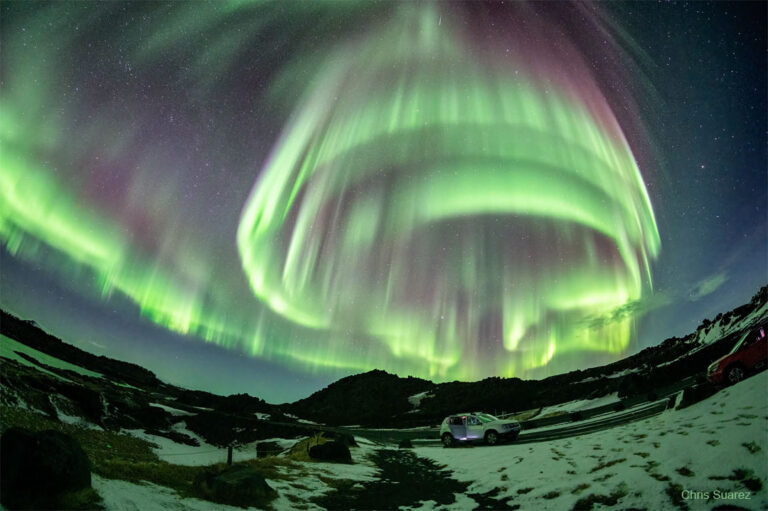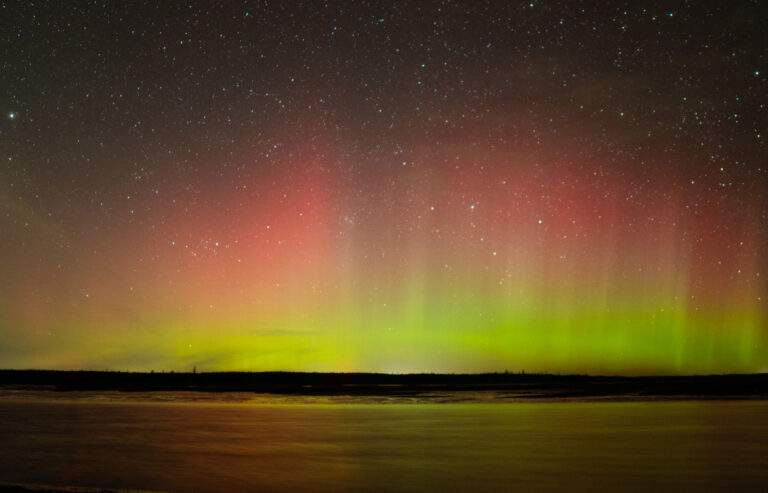新西兰上空的绚烂极光
A night sky is shown that appears mostly red due to pervasive aurora. In the foreground is covered by watery grasslands. Clouds are visible above the horizon. Thin green aurora are visible toward the top of the frame. In the background one can find the Moon, the LMC, SMC, Venus, a meteor, and the band of our Milky Way galaxy. Please see the explanation for more detailed information.
画面显示的是一个被普遍存在的极光染成红色的夜空。前景是一片被水草覆盖的草原。地平线上方可见云层。画面顶部可以看到稀薄的绿色极光。背景中可以看到月球、大麦哲伦星系、小麦哲伦星系、金星、一颗流星以及银河系的中央盘面。有关更多详细信息,请参阅说明。








